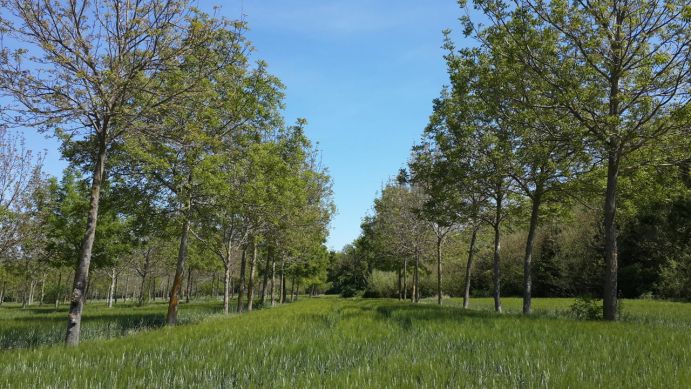ABCDR – Potentials of and decision making on agroforestry
The ABCDR project is investigating how much carbon can be sequestered by agroforestry and how this can be implemented in practice.

Agroforestry combines agricultural and forestry systems. Ideally, such mixed systems can unlock great synergies that have a positive impact on water balance, nutrient balance, biodiversity, crop yields, humus formation and carbon sequestration. In many parts of the world, such as Latin America, African countries and parts of Asia, agroforestry systems are already widespread, but rarely in Germany.
The ABCDR project investigates in regional case studies for Germany and on an international level why agroforestry systems are not more widely applied and how this could change in the future. For this purpose, the biophysical potentials, the decision-making processes in agriculture, and the role of climate and agricultural policy are analyzed. The researchers work with different scientific approaches and incorporate the knowledge and practical experience of stakeholders. Computer simulations are also used to explore both the biophysical potential and possible agroeconomic future pathways in which agroforestry systems play a greater role than they currently do.
The three-year ABCDR research project is being conducted by scientists from the Potsdam Institute for Climate Impact Research (PIK) and the University of Bonn.
Project management
Dr. Benjamin Leon Bodirsky
Potsdam-Institut für Klimafolgenforschung
Telegrafenberg A31
D-14471 Potsdam, Germany
Phone: +49 331 288 2415
Email: bodirsky@pik-potsdam.de
Last updated on



